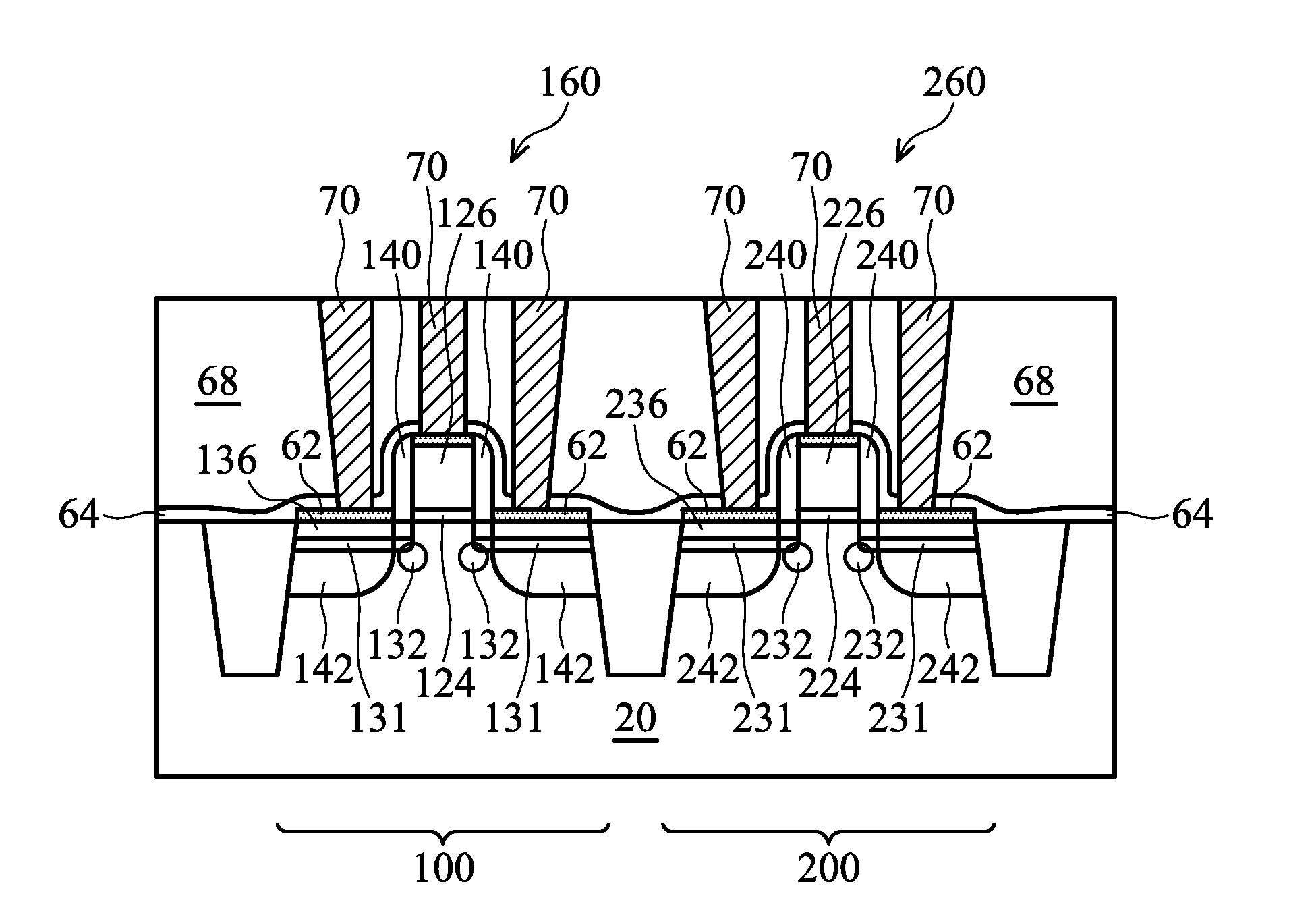Fabrication of Source/Drain Extensions with Ultra-Shallow Junctions
a technology of source/drain extension and ultra-shallow junction, which is applied in the manufacturing of semiconductor/solid-state devices, basic electric elements, electric devices, etc., can solve the problems of increasing leakage current, preventing further improvement of device performance, and causing problems such as affecting the performance of the device, so as to reduce the junction depth and reduce the resistance of the sheet. , the effect of reducing the leakage curren
- Summary
- Abstract
- Description
- Claims
- Application Information
AI Technical Summary
Benefits of technology
Problems solved by technology
Method used
Image
Examples
Embodiment Construction
[0016]The making and using of the embodiments of the present invention are discussed in detail below. It should be appreciated, however, that the embodiments provide many applicable inventive concepts that can be embodied in a wide variety of specific contexts. The specific embodiments discussed are merely illustrative of specific ways to make and use the invention, and do not limit the scope of the invention.
[0017]Conventionally, pre-amorphized implantation (PAI) was performed by implanting germanium ions into silicon substrates. However, it has been found that the metal-oxide-semiconductor (MOS) device formed using germanium PAI can no longer provide low sheet resistances, small junction depths, and low leakage currents that satisfy the demanding requirements of 32 nm and 22 nm technologies. A novel method for forming MOS devices and performing the PAI is thus provided. The intermediate stages of manufacturing an embodiment of the present invention are illustrated. The variations ...
PUM
 Login to View More
Login to View More Abstract
Description
Claims
Application Information
 Login to View More
Login to View More - R&D
- Intellectual Property
- Life Sciences
- Materials
- Tech Scout
- Unparalleled Data Quality
- Higher Quality Content
- 60% Fewer Hallucinations
Browse by: Latest US Patents, China's latest patents, Technical Efficacy Thesaurus, Application Domain, Technology Topic, Popular Technical Reports.
© 2025 PatSnap. All rights reserved.Legal|Privacy policy|Modern Slavery Act Transparency Statement|Sitemap|About US| Contact US: help@patsnap.com



